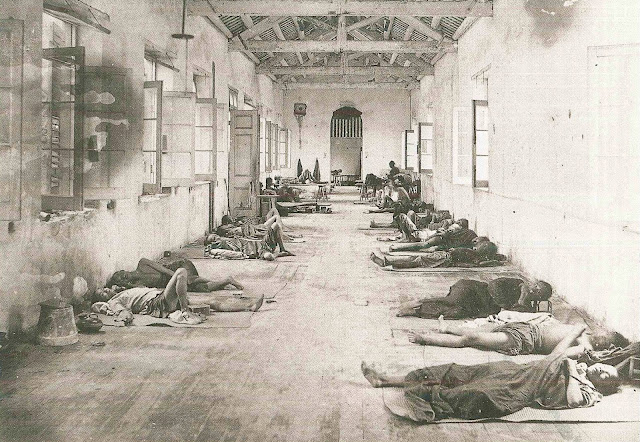During the Hong Kong Plague of 1894, a seriously ill Hong Kong citizen patient infected with the plague lay in a glass factory in Kennedy Town. The plague patients were housed in a facility that used the glass factory as a temporary hospital. There were six contraceptive hospitals (hospitals specializing in infectious diseases) in Hong Kong; on May 14, Kennedy Town Hospital was opened as a temporary hospital for the Kennedy Town Police Station; on May 21, the Glass Factory Hospital was established in Kennedy Town; on May 22, the Glass Factory Hospital was opened in Kennedy Town; on May 23, the Glass Factory Hospital was opened in Kennedy Town; on May 24, the Glass Factory Hospital was opened in Kennedy Town. The photo shows a different hospital from the Kennedy Town Hospital. Pathological autopsies were performed in a shed in a corner of the Kennedy Town Hospital, a hospital specializing in infectious diseases.
The Hong Kong Plague of 1894 was part of the third plague pandemic that swept through Hong Kong. The plague caused its most devastating deaths in 1894 and recurred every year from 1895 to 1929, killing a total of more than 20,000 people, with a fatality rate of over 93%. Hong Kong was overcrowded with poor ventilation, drainage, and sanitation services. The plague was a major turning point in the history of colonial Hong Kong, forcing the colonial government to reconsider its policies toward the Chinese community and invest in the well-being of the Chinese people.
The most violent epidemic occurred between 1347-50, claiming the lives of 25 million people, one-third of the population of Europe. Shibasaburo Kitasato, who had traveled to Hong Kong by order of the Meiji government, was in Hong Kong on June 14, 1894, the moment he unmasked the plague that had plagued mankind and taken so many lives over the years. The plague returned to southern China in 1894 and began to rage in Hong Kong. In the microscopic field of view of the blood of plague patients, a characteristic bacterium was recognized. The plague transformed itself into a visible germ. The results were published on June 18, after the pathogen had been determined by Koch's four principles. Published in the August 11 issue of the renowned medical journal The Lancet, Kitasato Shibasaburo's results became known around the world. The plague that raged in Hong Kong finally reached Kobe five years later in 1899. Shibasaburo Kitasato passed the Contagious Disease Prevention Law in 1897, and in 1899 the plague was added to the Port Opening Quarantine Law.




No comments:
Post a Comment